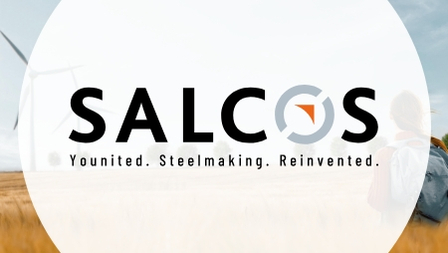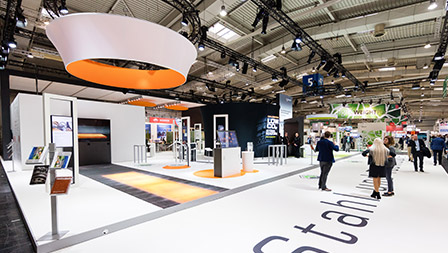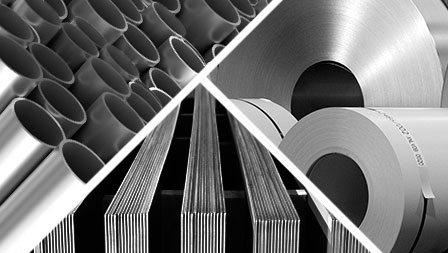Key data for the financial year 2016
28.02.2017 | Salzgitter AG
Salzgitter Group continues on its successful course with a further increase in the result
- Profit before taxes well above prior year
- Rigorous implementation of internal programs of measures:
- Completion of “Salzgitter AG 2015” exceeds original target by one third
- “Salzgitter AG 2021” growth strategy defines cornerstones for the company’s further development
- Guidance for the financial year 2017: pre-tax profit of between € 100 million and € 150 Million
Despite the disastrous conditions on the European steel market caused by imports at the start of the year, the Salzgitter Group closed the financial year 2016 with a significant year-on-year increase in earnings before taxes. The company has therefore affirmed its uptrend. The significant impact of internal programs of measures as well as the positive effect of the European Union’s urgently required trade defense measures as from February 2016 onward were major factors contributing to this development. In the second half of the year, the Strip Steel and Trading business units in particular benefited from steel prices firming up.
The Salzgitter Group’s external sales (€ 7,905.7 million; 2015: € 8,618.4 million) declined above all due to the downtrend in the average selling prices of steel products. Pre-tax profit increased to € 53.2 million (2015: € 4.1 million) and includes € 19.1 million in contribution from the Aurubis investment (2015: € 21.8 million) as well as a net figure of € –2.3 million in burdens on earnings from special items. Earnings after tax stood at € 56.8 million (2015: € – 56.0 million), exceeding the pre-tax result mainly due to the anticipated greater use of tax loss carryforwards. Earnings per share therefore came in at € 1.00 (2015: € – 1.08) and return on capital employed at 2.7 % (ROCE, 2015: 1.9 %). With a net financial position of € 302 million and an equity ratio of 34 %, the company continues to have a sound balance sheet and a comfortable financial basis.
Chief Executive Officer Prof. Dr.-Ing. Heinz Jörg Fuhrmann commented as follows: “The positive pre-tax result of the financial year 2016 ultimately also reflects our own endeavors in the context of rigorously implemented programs of measures. We have given the Group robust prospects for the future that will be completed through the recently approved “Salzgitter AG 2021” strategy. After the unavoidable focus on restructuring and cost cutting initiatives in recent years, we now place special emphasis on innovation and growth. Although the prospects are more favorable at present than they have been since 2012, we will not be relying on tailwind from the market environment, but will follow our clearly defined course of internal business optimization. I am therefore confident that we will see an increase in the Group’s results in 2017 for the fourth time in a row.”
Development of the business units
The Strip Steel Business Unit’s external sales (€ 1,814.6 million; 2015: € 1,922.5 million) reported a slight price-induced decline. At € – 2.3 million, the business unit lifted its pre-tax result compared with the year 2015 (€ – 26.0 million) that was burdened by € –41.9 million from the relining of a blast furnace at Salzgitter Flachstahl GmbH. Thanks to the European Union’s first anti-dumping measures, spot prices began to rise from the spring onward, which was gradually reflected in an improved selling price quality. The losses accumulated in the first half of 2016 due to the unsatisfactory margins caused by the import situation were therefore largely compensated.
At € 741.8 million, the external sales of the Plate / Section Steel Business Unit dropped below the year-earlier level as a result of weak selling prices and shipments (€ 908.8 million). Although the segment improved its result significantly it nonetheless delivered another pre-tax loss ( € – 32.1 million; 2015: € – 74.1 million). This figure includes order-related provisions and € 6.3 million in expenses for measures aimed at structural improvements in the plate companies. Peiner Träger GmbH achieved a pre-tax profit for the third year in a row, delivering proof of the company’s sound operations and entailing a write-up of € 25.0 million due to its sustainability. Owing above all to the ruinous price and earnings situation in the first half of 2016, as well as to the processing of low-margin orders from 2015, the plate producers reported another notably negative result.
Even though the shipment volumes of the Mannesmann Business Unit exceeded the previous year’s figure, external sales (€ 999.4 million; 2015: € 1,062.6 million) declined due to selling price and structural effects. Despite the increase in the result of Salzgitter Mannesmann Großrohr GmbH and the higher positive contribution to earnings of the EUROPIPE Group that is included at equity, the business unit reported a pre-tax loss of € – 22.4 million (2015: € 2.2 million). This figure includes € 6.0 million in expenses for structural measures, mainly at Salzgitter Mannesmann Line Pipe GmbH (MLP), to respond to the challenge of fierce price-led competition through a restructuring program to adjust capacity and reduce costs further. In addition, impairment of € –15.0 million was carried out on MLP’s assets.
Owing to markedly lower prices and the downturn in shipment volumes, external sales (€ 2,855.0 million; 2015: € 3,210.7 million) of the Trading Business Unit declined significantly. Although the earnings position of the stock holding steel trade remained weak in the first three months, the following months up until and including autumn brought a temporary widening of margins that was based on the steel price trend. Combined with the result of international trading, this led to a very presentable pre-tax profit of € 45.2 million (2015: € 32.2 million).
The external sales (€ 1,300.3 million; 2015: € 1,309.4 million) of the Technology Business Unit settled around the year-earlier level thanks to the growth achieved by the KHS Group and DESMA Schuhmaschinen GmbH (KDS). The segment generated another increase in earnings before taxes of € 28.4 million (2015: € 24.6 million). The result of the KHS Group rose by a third, which was also based on the success of the measures introduced under the improvement programs. Similarly, KDS also notably outperformed the year-earlier result, as opposed to the pre-tax profit of the KDE Group that was lower year on year.
Industrial Participations / Consolidation reported somewhat lower external sales (€ 194.6 million; 2015: € 204.5 million). Earnings before taxes stood at € 36.3 million, which is therefore lower than in the year-earlier period (2015: € 45.2 million). This figure includes the contribution of the Aurubis investment amounting to € 19.1 million (2015: € 21.8 million). Interest income resulting from Group cash management as well as positive reporting-date-related valuation effects from foreign exchange and derivatives positions lifted the result. The pre-tax result of the Group companies not directly assigned to a business unit fell short of the figure achieved in 2015.
The annual financial statements for the financial year 2016 will be submitted to the Supervisory Board for ratification at its next meeting and a full version published on March 24, 2017.
Outlook
Compared with the previous year, the business units anticipate that business in the financial year 2017 will develop as follows:
Thanks mainly to selling prices rising in the EU steel market in response to the anti-dumping measures initiated in Europe, the Strip Steel Business Unit anticipates a more positive development of business. Assuming that robust demand holds steady, a notable increase in sales can be expected. Supported by ongoing cost reduction measures, a significant increase in the pre-tax result due to its return to the profit zone is envisaged despite the partly sharp rise in raw materials prices, particularly for iron ore and coking coal.
The Plate / Section Steel Business Unit will continue to be exposed to a difficult market environment in the current financial year. Satisfactory capacity utilization is nevertheless expected for the two heavy plate producers. Hence, the production of input materials for the Nord Stream II contract will contribute to a notable basic capacity utilization at the Mülheim mill. Moreover, the two companies will benefit from the extensive cost cutting and efficiency enhancement measures initiated in 2016. Passing on the full scope of hikes in raw material costs in a timely manner is, however, particularly challenging. Capacity utilization in the section steel business is expected to run at a satisfactory level. However, the volatile scrap price is likely to prompt speculative buying patterns on the part of customers. Drastic increases in grid usage fees for procuring electricity will pose an additional burden. All in all, the business unit anticipates a substantial volume- and selling price-induced increase in sales as well as a significant improvement in the result before taxes in the direction of breakeven.
The companies belonging to the Mannesmann Business Unit will again reflect very heterogeneous developments in 2017: While the German large-diameter pipe mills report good capacity utilization, also due to bookings in the previous year, the order situation in the North American market has deteriorated. The segments of medium-diameter line pipe, precision and stainless steel tubes are likely to stage a hesitant recovery at minimum. Rising shipment volumes supported by a higher selling price level should result in moderate sales growth in the segment. In conjunction with the profit improvement programs, both initiated and planned, a notably increased pre-tax result around breakeven is predicted.
In 2017, the Trading Business Unit anticipates marked sales growth on the back of the recovery in the international project business, as well as an increase in the sale of prefabricated products. Support should also emanate from expanding the customer base in the context of stepping up the digitalization of sales. As it cannot be assumed that the temporary widening of margins attributable to the steel price trend in 2016 will repeat in the financial year 2017, a very satisfactory pre-tax profit, albeit at a discernably lower level than in the previous year, is anticipated.
Based on a high order backlog, the Technology Business Unit anticipates that sales will remain stable. In view of the fierce price-led competition for the project business, the KHS Group will rely on growth in the profitable product segments as well as on expanding its service business. Moreover, above all the efficiency enhancing measures introduced under the new “Fit4Future 3.0” program are likely to develop their positive impact. In conjunction with the promising outlook for the other specialist mechanical engineering companies, a tangible increase in pre-tax profit is expected.
Against the backdrop of additional positive effects from measures and growth programs, we anticipate the following for the Salzgitter Group in 2017:
- an increase in sales to around € 9 billion,
- a pre-tax profit of between € 100 million and € 150 million, as well as
- a return on capital employed (ROCE) that marginally exceeds the previous year's figure.
The forward-looking statements on the individual business units assume the absence of renewed recessionary developments. Instead, we anticipate an ongoing economic recovery in our fiercely contested main markets in the current financial year. As in recent years, please note that opportunities and risks from currently unforeseeable trends in selling prices, input material prices and capacity level developments, as well as exchange rate fluctuations, may considerably affect performance in the course of the financial year 2017. The resulting fluctuation in the consolidated pre-tax result may be within a considerable range, either to the positive or to the negative. The dimensions of this range become clear if one considers that, with around 12 million tons of steel products sold by the Strip Steel, Plate / Section Steel, Mannesmann and Trading business units, an average € 25 change in the margin per ton is sufficient to cause a variation in the annual result of more than € 300 million. Moreover, the accuracy of the company's planning is restricted by the volatile cost of raw materials and shorter contractual durations, on the procurement as well as on the sales side.
Disclaimer:
Some of the statements made in this report possess the character of forecasts or may be interpreted as such. These are made to the best of the Company’s knowledge and judgment, and by their nature are subject to the proviso that no unforeseeable deterioration occurs in the economy or in the specific market situation pertaining to the division companies, but rather that the underlying bases of plans and outlooks prove to be accurate as expected with regards to their scope and timing. Notwithstanding prevailing statutory provisions and capital market law in particular, the Company accepts no obligation to continuously update any forward-looking statements that are made solely in connection with circumstances prevailing on the day of their publication.















